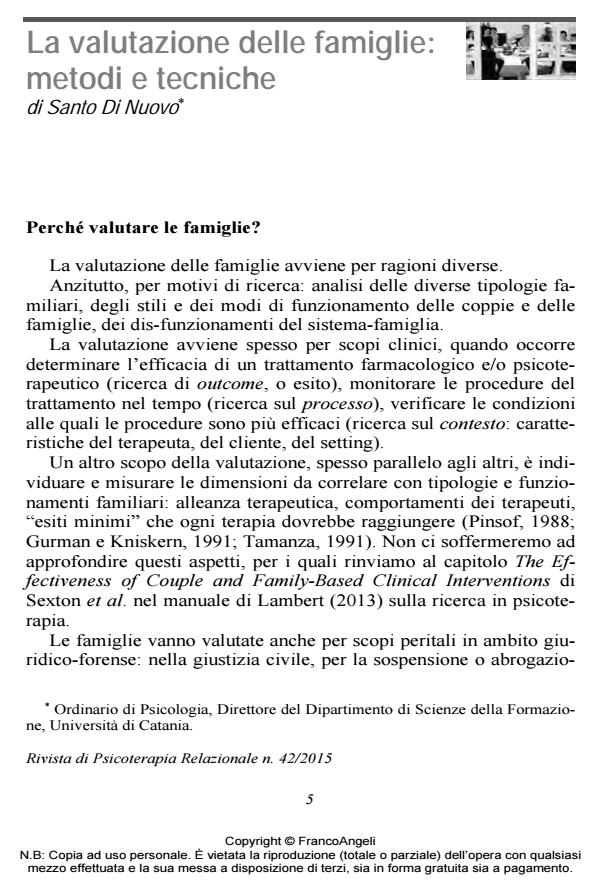Assessing families: methods and techniques
Journal title RIVISTA DI PSICOTERAPIA RELAZIONALE
Author/s Santo Di Nuovo
Publishing Year 2015 Issue 2015/42
Language Italian Pages 15 P. 5-19 File size 61 KB
DOI 10.3280/PR2015-042001
DOI is like a bar code for intellectual property: to have more infomation
click here
Below, you can see the article first page
If you want to buy this article in PDF format, you can do it, following the instructions to buy download credits

FrancoAngeli is member of Publishers International Linking Association, Inc (PILA), a not-for-profit association which run the CrossRef service enabling links to and from online scholarly content.
The evaluation of the families responds to research or clinical aims, and is also common in juridical and forensic contexts. The assessment can be carried out by means of different methods: observation of interactions and behaviors of the family, either spontaneous or in response to specific stimuli, such as tasks of structured play; psychometric tests, projective or questionnaires. Among these the test FACES, widespread also in Italy and which has been adapted and standardized in the fourth version, is addressed in detail. The possibilities of use for research and clinical purposes are underlined in the review.
Keywords: Family, assessment, instruments, projective tests, inventories, FACES-IV
- TIAP: an observational procedure for assessing family relationships: a clinical case from the parenting evaluation context Ada Cigala, Elena Venturelli, Laura Fruggeri, in Frontiers in Psychology 1330115/2024
DOI: 10.3389/fpsyg.2024.1330115
Santo Di Nuovo, La valutazione delle famiglie: metodi e tecniche in "RIVISTA DI PSICOTERAPIA RELAZIONALE " 42/2015, pp 5-19, DOI: 10.3280/PR2015-042001